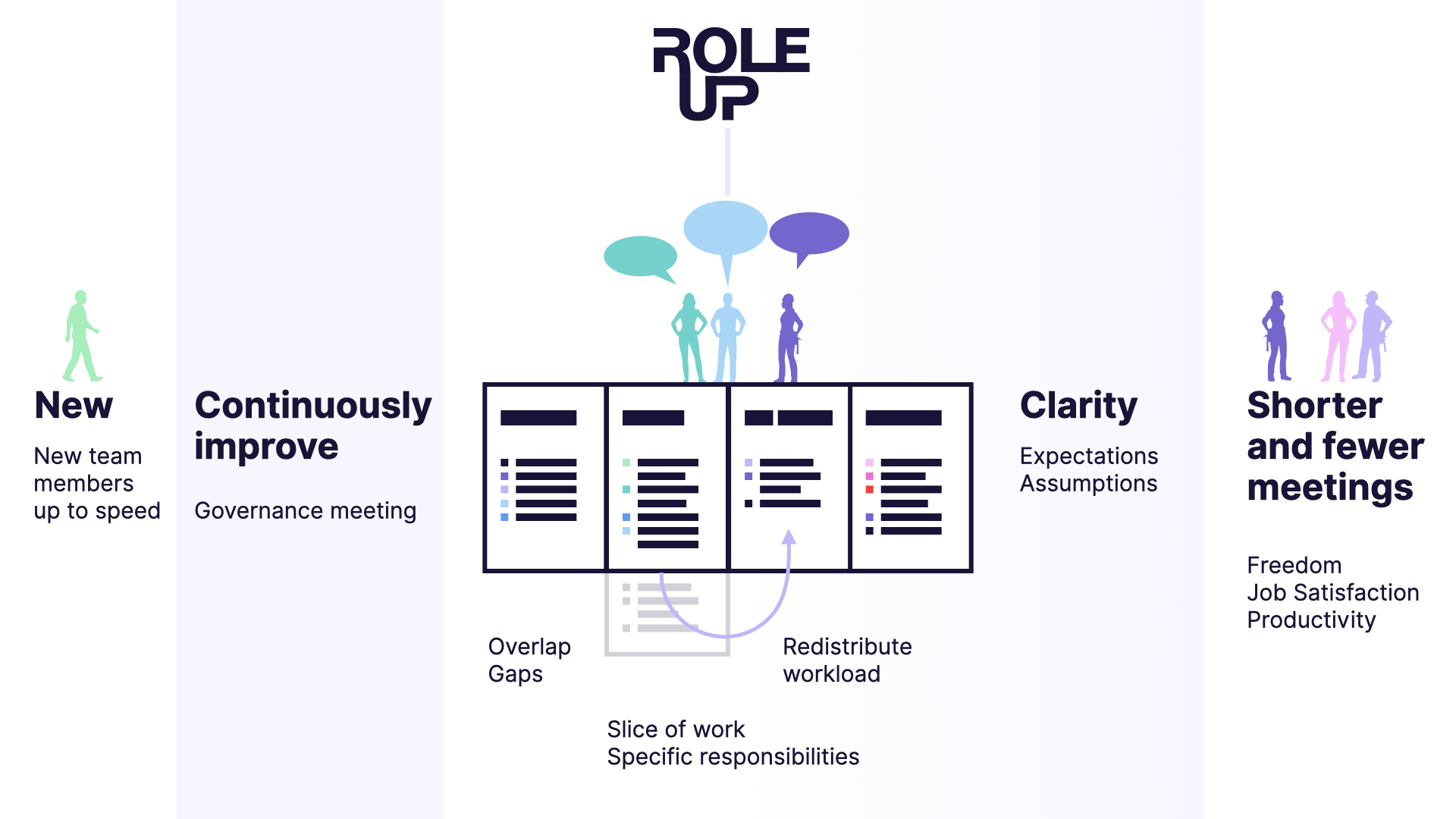
Retrospective: Roles and Responsibilities
Does your scrum team have team members who avoid talking to each other? Is passive-aggressive behavior getting in the way of good teamwork? Are there irritations between team members? This article provides a Role-based sprint retrospective format that helps your team work better together.
When to use this format?
This retro format is great for teams who:
- Experience hostility or conflict between team members.
- Have team members who are not talking to each other.
- Want to discuss the ‘boundaries’ of their Roles: who does what?
Why use this format?
This format will help your team to work better together. We based this format on our experience working in scrum teams and working with Roles.
This format will help your team:
- Make explicit what they expect from each Role. No more assumptions.
- Discuss irritations and conflict per Role instead of per person.
How to run the retro with Roles:
- Use a (digital) whiteboard or an empty wall and Post-its.
- On the whiteboard or wall, the Scrum master creates a column for each Role in your team. Name the Role with a post-it at the top of the column. Roles can be filled by more than one person. This exercise is about the Roles, not about the persons.
- For each Role, team members write on yellow post-its: This Role is definitely responsible for …. One responsibility per post-it. Team members can write multiple post-its. Everyone can create post-its; also, the people filling the Role.
- Paste the yellow post-its under the Role without discussion. Move to the next Role.
- When all Roles have yellow Post-its, pick up the orange Post-its (or any other color that is not yellow). Move back to the first Role, and now team members should write down what (in their opinion) this Role is NOT responsible for.
- Paste the orange post-its below the yellow ones without discussion.
- When all Roles have yellow and orange post-its, give each team member 7 (digital) dot-votes (stickers). Ask the team to silently read the post-its and place their dots on the yellow or orange post-its they want to discuss. Team members are allowed to put multiple dot-votes on one post-it.
- When all team members cast their votes, start with the post-it with the most votes. Start the discussion by inviting team members who voted to motivate the vote. Try to clarify (implicit) expectations team members might have about a Role’s responsibilities. Write down clarifications or agreements the team makes. Repeat for other post-its with votes.

Tips:
- As a scrum master, you can define the relevant Roles for this exercise. Limit the number of Roles to a maximum of 7; otherwise, the team will lose the overview, and the assignments will get repetitive.
- Keep discussing Roles; avoid using team members’ names.

Last updated on
More Resources
-
Introduction to Working with Roles
A brief introduction to bring you up to speed in 2 minutes. What are Roles? How can you work with Roles? How are they used for self-management in Holacracy and sociocracy, and how can working with Roles benefit your team?
Learn the basics in 2 minutes -
Workshop: Start working with Roles
This easy-to-follow guide will help you to organize a workshop for your team. You will create and assign roles and list responsibilities. Open workshop guide -
How to run an effective
Once your team has defined its Roles and responsibilities, how do you keep them up-to-date? The answer is a recurring governance meeting! Read on to learn what a governance meeting is and how to run one effectively. Run effective governance meetings
Governance Meeting -
Working with Roles as a team
How can teams use Roles to work better together? What are the benefits of working with Roles for teams? How can working with Roles help your team to reduce friction and irritation, improve communication, have fewer meetings, and deliver more value?
Read about working with Roles as a team -
Why every Agile team
should use Role-up
Watch our video about why every team that works agile should use Role-up and experience the advantages of working Role-based.
See why every agile team should use Role-up -
Organizations work better with Roles
How can organizations benefit from working with Roles? How can they scale and grow more agile with Roles? How does working with Roles enable companies to distribute decision-making authority and become more resilient? And why is that a good thing for a founder or CEO?
Learn how organizations benefit from Roles -
Seven reasons organizations start working with Roles
A growing number of organizations have switched to some form of self-management. This can be Holacracy, sociocracy, or other practices. What makes these companies transition to working with Roles? What frustrations and annoyances motivate this change?
Find out what we discovered -
Get help from a Professional
There are professionals who can help you with setting up Roles, creating robust governance structures, and improving how you work together with your team.
View the list of professionals








